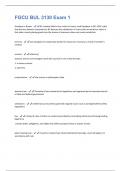Resume
Summary Global Banking Theory Lectures ('22 - '23)
- Établissement
- Vrije Universiteit Brussel (VUB)
Comprehensive summary of the lectures for the course Global Banking. Suitable for students International Business. Given by Freddy Van Den Spiegel at the Vrije Universiteit Brussel in the academic year . Allowed me to pass during the first session with a 17/20.
[Montrer plus]












